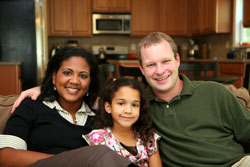 Relationship Change: The Power Is Yours
Relationship Change: The Power Is Yours
Many people are frustrated because they have motivation for relationship change, but their partner, teen, or other significant person doesn’t. Did you know that by changing your behavior you can create changes in others’ behavior, too? You can have a huge positive impact on what seems like a dead-end situation, even if you are the only one doing anything different. This week we’ll start to look deeper at the first and fourth elements of a healthy relationship, being responsible for your own actions and happiness, and thus changing others (by changing yourself).
This is NOT about how to make people do what you want them to do or control them with some Jedi mind stuff. You know that you can create positive and negative responses by doing certain things. Being rude gets you to one place, and being agreeable gets you somewhere else. It’s about how relationships work. We act, others react, then we react to that, and others react to that, and, I think you get the picture. This is what Harriet Lerner called The Dance – how two people (or more) form a dance of patterns in a relationship. One person takes a step forward, and the other person takes a step back to stay in sync. Our most important relationships are like unique and complex dances. Some dances are harmonious, and some a little more chaotic. To change a person’s behavior, start by changing your dance moves and see how the whole dance changes.
We do the same dances time and time again
Most of the arguments in a relationship are likely to sound like a CD stuck on repeat. Your child does something they are not supposed to, so you react in the predictable way, and so do they. The root of the behavior is never addressed, so you will dance again in an hour. Your partner “always” or “never” does this or that, and you can see a disagreement coming a mile away. The dance is always similar in your head, too. The things you tell yourself about a situation, the emotions that come up for you, they are the music. Are you “always” the yeller, and your partner “always” the silent one? Are you the one that starts all of the “talks”? Or the one that gets all of the “talking to”? With your kids, are you always the bad guy, or the fun parent? The softie, or the hammer? Do you have similar issues with folks at work and in other areas? Are you always the one that rushes in to save a situation from becoming a crisis? Or the one that takes care of others? And the dances we do are very common. You can bet that you aren’t the only one with certain dances you’d like to change. Think of it has having plenty of company in the ballroom.
You can only move your own feet in any dance
So many people want great relationship change, but they say things like, “I want my partner to do…” Or, “I want to get my kids to stop doing this and start doing that.” It’s fine to want someone to change, and you can do plenty to encourage that, but that’s like looking at another’s feet and thinking that if you concentrate hard enough they will move. You have to focus on what you can control, which is the role you play. The same is true when waiting for someone else to change before you’ll change. Sure, it would be convenient if the other person did something that made it easier or more enjoyable to change what you are doing. But, as long as you are lock-step in the same old patterns that is unlikely to happen.
So, where do I start?
Start identifying your patterns and your dance. You could, if so inclined, sit down with a pen and paper and actually write out what you know to be the steps to something that you and a loved one struggle with. For example: “First, the kids do this, and then we do that, and it ends with this.” Or, you can just observe your life and see if you have that deja vu feeling. In your head you might say something like, “Oh, here we go again…” That would be the first clue that you are dancing. Is there a point at which you typically lose your temper? Or storm off? Or start to go off in an unhealthy direction with your thoughts? Take an honest look at what part you play in the dance. It can seem hard at first, but with practice you can see patterns emerging.
I would also take a look at Harriet Lerner’s books.
 The Steps to Healthy Communication Can be Simple
The Steps to Healthy Communication Can be Simple